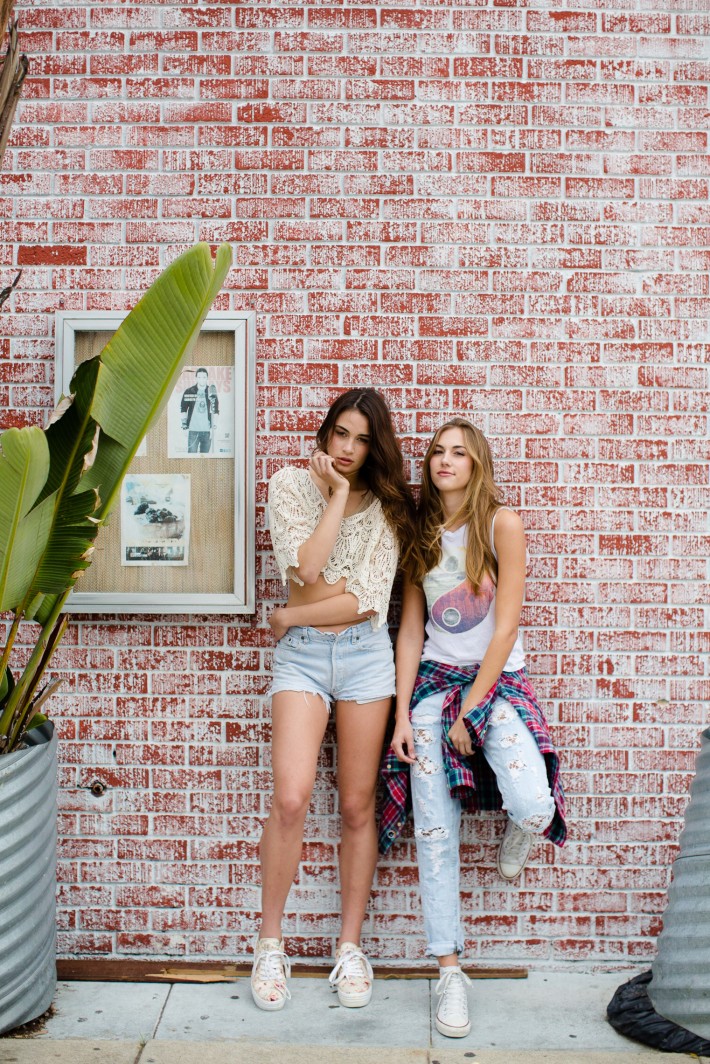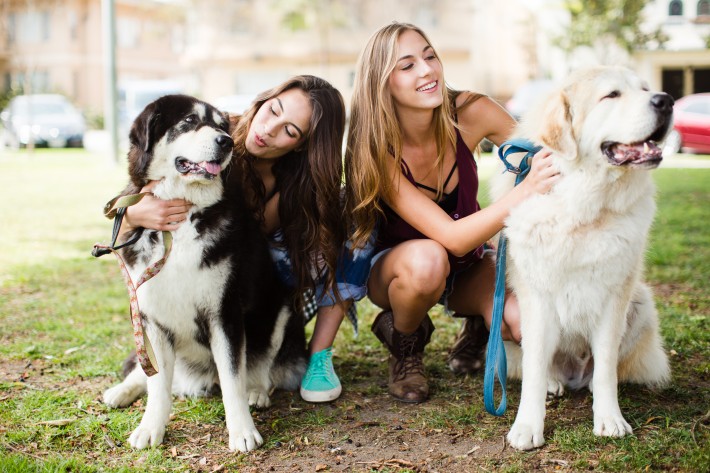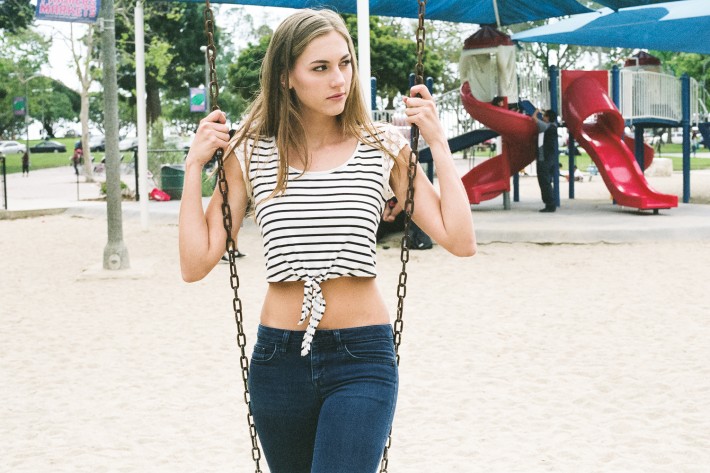When we first start out on any sort of endeavor, be it creative or otherwise, we all most likely begin same way: a head full of ideas, but a distinct lack of understanding and experience of how to achieve them. Over time, through the benevolence of others, and many hours of Youtube tutorials, our ability catches up and we reach the place where creativity meets experience. It's at this point that we're suddenly able to bring about our vision through to it’s realization with what seems like almost minimal effort.
While it may seem like it's a minimal effort, the secret is that nothing about a successful shoot is a minimal effort. Everything we need to do to bring about a successful shoot, whether it is fashion, lifestyle, wedding, engagement, requires an incredible amount of planning and communication between team members. Even if it’s just photographer and model, communication and planning is key to well, to everything really.
When I first began shooting, I was under the impression that the pros just phoned it in, chose the concept, threw together a team, grabbed some lights and went for it. And to be honest, I spent a good part of my early career believing this to be true - and my shoots were very reflective of this - half hearted concepts, thrown together in a day or so, and with anyone who was willing (and available) to stand in front of my camera.
Thankfully for myself and the members of the teams I currently work with, those days of "throwing it together" are long behind me. While I still do occasionally like to put together a last minute shoot, I believe that in learning how to properly plan every shoot, I’ve come to a place where I can set up that last minute shoot and still have it fall in line with my overall photography goals.

In this multi-part series, I am going to take you through a full lifestyle shoot. From brainstorming and concept development, to location scouting and contacting and communicating with team members and agencies. This first section will concentrate on where to find inspiration, how put together a mood/concept board, and how to go about communicating that inspiration through to your team members.
Just like anything else, concept development can be personal thing and when asking around, you're sure to get many different reasons for using them. "Mood boards are a pivotal instrument in the creative process. It brings all parties on the same page, and it's a great way to convey the message or mood." Says, Rodney Alan. I couldn't agree more. It's through this communication that everyone has a basic understanding of the goal while still bringing to the table their individual strengths and needs. In addition, it's a great way to weed out team members who do not fit the concept. This isn't necessarily a bad thing. Everyone on the team should be on the same page working toward the same goal - if that's not the case, the final product will suffer as a result.
*Disclaimer: I am a lifestyle photographer, so while you can gather up some good information for other genres, this "how-to" will obviously be geared toward the type of work that I am most comfortable with.

Concept Development
Unless you’re being contracted out by companies, almost every shoot begins the same way: something you see or hear sparks something inside you and an idea for a shoot is born. Whether you’re shooting weddings or fashion, lifestyle or engagements, everything comes from somewhere. Unless you’re an expert in drawing out your own original storyboards (and some of us are), it’s a great idea to search around for images that closely resemble that idea you’re wanting to shoot so that when you’re going to explain your concept to your team, they have a clear understanding of what everyone is trying to accomplish.
When I’m developing a concept, there is one guiding question I like to think keep in mind: am I shooting what I want or am I shooting what I need? Shooting for fun and to stretch your creative legs is good, but if you’re working toward a goal... of working, it’s a great idea to spend more time shooting what you need in terms building your portfolio, etc. Of course, if you reach the intersection where the two meet, congratulations - you’ve found a golden ticket - run with that for as long as you can.

Moodboard:
When I’m building the moodboards, I sometimes like to use a program like Evernote because in addition to being able to create fast, easy to use concept boards, I can share the boards with my team from my desktop and/or my iPhone app. It’s simple, effective and works really well. Remember, you want to make the communication between team members as easy to understand as possible. Long, written descriptions of what you want to shoot are great, but honesty I find that nothing gets to the point faster than being able to show someone a photo and saying, “I want to do something like this,” and show them.
If Evernote is not your cup of tea, my backup program is, obviously, Photoshop. I actually default to using this more than anything. Creating a blank image, I’ll import and place as many photos as I feel I need to get my concept understood. In addition to images which include wardrobe and possible location ideas, some of my friends with a more specific or developed concept, sometimes break it down even further and include separate sections for hair and makeup. If the idea of creating a moodboard is new to you, I would perhaps skip the breaking it into sections and just go ahead and keep the board to the overall concept. What I’ve found is that a quick conversation with your makeup artist and hair stylist beforehand will usually get everyone on the same page regard to keeping the hair and makeup in line with the overall concept/idea.
In the old days of concept development, I like to imagine that there were rooms with hundreds and thousands of images cut out of magazine and hastily pasted to the walls. Today, it's fairly easy to fill a desktop and Dropbox folders with hundreds of images we pull off the Internet. When you begin to create moodboards, it’s a good idea to learn how to use the screen cap or print screen feature so while your browsing and something catches your eye, you can store it away for use at a later date. I can’t tell you how many times I’ve seen a photo online, loved it, thought I was too busy to grab it, and then once I had a moment and wanted to go back and save it, completely forgot where I saw it. Best advice here would be to always keep your shoots in the back of your head because inspiration can and will pop up anywhere.
*Disclaimer II: While I do agree that it’s cool to screen cap and share the work of other photographers, this borders on a very weird area. I don’t mind when someone takes my photo to use as inspiration on one of their concept boards, but I don’t believe that’s how everyone else feels. So, go easy on using the work of other photographers.

Depending on what I'm wanting to shoot, there are several places I like to look when hunting down a concept. One place I’d recommend is perhaps most obvious - is any of the magazine websites themselves. There are literally thousands to choose from, from the lifestyle concepts that I shoot, to the high fashion and more couture style that some of my peers shoot. In addition to that, Pinterest is perhaps the second most used place where I look for inspiration. The search/hashtag feature is really pretty wonderful and will bring up just about anything I could possible be looking for... and then some.
In addition, I also enjoy going to local retails stores and/or their websites and checking out their latest catalog and/or their most recent style guide. There is no need to reinvent the wheel here - the purpose of a catalog is to show the fashionable challenged what outfits go well with one another. They’re already doing the work for you. Also, image-sharing sites like Flickr, DeviantArt, 500px, Facebook and of course Tumblr are all great places to look as well. Though to be honest, I don’t spend too much time on them as they tend to be filled with work that is much different than I am shooting these days.
Once you gather up the images on your drive, you can use your image editor of choice and place them in a relatively cohesive moodboard, making sure that all the looks are matched to one another and will flow into something that makes some kind of sense (As an aside, I highly recommend using a professional makeup artist, hair stylist and wardrobe stylist on your shoots. If you can’t find anyone who will work for trade, paying a kit fee and/or the hourly rate will guarantee that your shoot have a more professional look to it). Once you’ve created your moodboard, it’s time to review it, see if it matches what you're trying to accomplish, and send it off to the members of your team.
 All images in this moodboard are copyright of their respective owners and are used here for educational purposes.
All images in this moodboard are copyright of their respective owners and are used here for educational purposes.We’ll cover that, and much more, including how I developed, planned, communicated, and shot this particular concept in the upcoming parts of this series.
*Disclaimer III: Like anything else, the moodboard is a tool that, when used properly, can help you get close enough to a certain or specific concept or idea that you're trying to accomplish without actually copying the work of someone else. The photos may have a similar feel, but the creative differences we each bring to the table as photographers will be apparent when we look at the final product. Basically, don't copy - enjoy our differences in both approach and execution.
John Schell | Instagram | Vimeo







Awesome!
Thanks for this! I've been looking for some direction on how to get a pet project off the ground.
Great piece of info!!
I once wrote something (in a less detailed way than you).
If it can help someone, here's the link: ( but read his post first if you want to get all the parts )
http://julientorriani.com/blog/photography/how-to-plan-a-shoot/
For moodboards I sometimes use (for the convenience of other team members and clients) Pinterest's secret boards. They've recently lifted the limit on secret boards to unlimited, at least, for me anyway. I understand it may not be everyone's preferred method, but this is just one of the many tools I sometimes use to get the job done. Evernote is also an excellent tool for moodboard and project management. Great post!
Thanks for this John, looking forward to the other parts!
Interesting tips. I honestly think an important thing to do is chat with another photographer and ask for 1-1 tips.
It's a relatively friendly industry and helping each other out is part of it.
A friend of mine actually connected with Iain Sherwood, he's been in the photography industry for many years. He's done everything from concept shoots to full wardrobe selection. You can actually chat with him here: https://www.wisewords.co/experiences/1354/
When is the third part coming out?